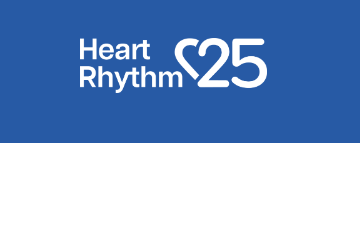
Despite advancements in ventricular arrhythmia (VA) screening, numerous high-profile athlete cases have highlighted the need for improved detection and management. A new study presented at Heart Rhythm 2025 in April evaluated the connection between complex VA patterns in athletes and underlying structural heart disease, offering critical insights into the prognostic value of both non-invasive and invasive assessments in athletes with complex VAs.
VA contributes to nearly 30 percent of sudden cardiac deaths worldwide and disproportionately affects younger individuals,1 including competitive athletes. Researchers found that athletes with uncommon complex VA patterns were more likely to have structural heart disease and faced a higher risk of sudden cardiac death compared to those with more typical arrhythmias.
Beyond their role in causing sudden death, VAs are a significant cause of morbidity, leading to debilitating symptoms that can severely affect an individual’s quality of life.
The international multicenter cohort study of 215 athletes (83% male, median age 28 years, 162 competitive) evaluated the differences in sudden death and sustained VAs between those with common complex VAs (outflow tract/fascicular) and uncommon complex VAs (other morphologies/polymorphic).
Each athlete underwent a comprehensive diagnostic evaluation, including a cardiac magnetic resonance (CMR) scan. The electrophysiology study with electroanatomic mapping showed that athletes with uncommon VA patterns had higher rates of abnormal findings and were more often diagnosed with structural heart disease.
Over a median follow-up of six years, 16 athletes (7%) experienced VAs, including one sudden death. 88% of these occurred in the uncommon VA group. Diagnostic tools, including stress testing, cardiac MRI and electroanatomic mapping, improved risk stratification. Among 162 athletes, 108 (67%) regained eligibility after three months, but only 44 (27%) resumed long-term competition.
“Our study underscores the importance of comprehensive diagnostic evaluations to accurately assess the risk that uncommon complex ventricular arrhythmias pose to athletes,” said Paolo Compagnucci, MD, PhD, of Marche University Hospital in Ancona, Italy. “As we continue to advance our understanding of cardiac care for athletes, it is crucial that clinicians have the knowledge and tools to manage these conditions effectively, ensuring athletes receive the proper care while protecting their health.
Athletes with VAs present a challenge for physicians, often leading to uncertainties in their management.2 Effective care requires specialized knowledge of how physical activity, sport-specific factors, exercise-induced heart changes and arrhythmic conditions interact.
Integrating clinical, ECG and imaging findings—with selective use of invasive electrophysiology—can improve risk assessment in athletes with complex VAs.
NOTE: In 2024, the Heart Rhythm Society released an international expert consensus statement to educate clinicians providing arrhythmia-related care to athletes and promote research on the best approaches for preventing, diagnosing, and managing arrhythmias in athletes.
1. Bhaskaran A, De Silva K,Kumar S. Contemporary updates on ventricular arrhythmias: from mechanisms to management. Internal Medicine Journal. 2023; 53(6):892-906.
2. Russo AD,Compagnucci P, Casella M, Gasperetti A, Riva S, Dessanai MA, Pizzamiglio F, Catto V, Guerra F, Stronati G, Andreini D. Ventricular arrhythmias in athletes: Role of a comprehensive diagnostic workup. Heart Rhythm. 2022; 19(1): 90-9.


 July 30, 2024
July 30, 2024 









